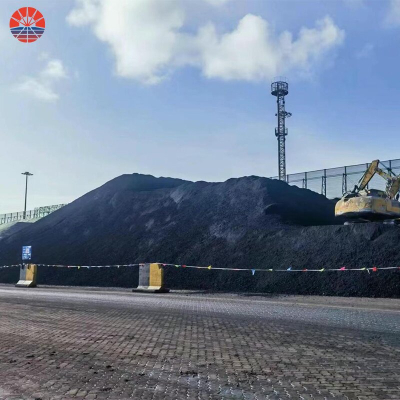Raw Petroleum Coke Price Trend
The use of petroleum coke (petcoke) in cement plants can offer several benefits, especially when it is used as a supplemental fuel. Some of the advantages include:
Cost-Effective Energy Source: Petcoke is often cheaper than traditional fossil fuels like coal and natural gas. Using petcoke as an energy source can help cement plants reduce their operational costs, making the cement production process more economically viable.
High Calorific Value: Petcoke has a high calorific value, meaning it contains a significant amount of energy per unit mass. This high energy content can result in efficient and effective combustion, providing the heat required for the cement kiln's high-temperature processes.
Consistent Supply: Petcoke is a byproduct of the petroleum refining process, ensuring a relatively stable and reliable supply for cement plants that choose to use it as a fuel source.
Reduction of Carbon Emissions: Compared to coal, petcoke generally has lower carbon content, which can lead to lower carbon dioxide (CO2) emissions per unit of energy produced when it is used as a fuel. This can contribute to the cement industry's efforts to reduce its carbon footprint.
Improved Kiln Performance: The higher heat content and combustion characteristics of petcoke can result in better kiln performance, higher clinker production, and increased energy efficiency.
Sulfur Content: In comparison to some coal types, petcoke usually has lower sulfur content. Using petcoke can help reduce sulfur dioxide (SO2) emissions, which are a major cause of air pollution and acid rain.
It is important to note that while petcoke offers these benefits, its usage in cement plants also comes with certain challenges and considerations. The high carbon content of petcoke means that it contributes to greenhouse gas emissions when burned. Additionally, the combustion of petcoke can release other pollutants, such as nitrogen oxides (NOx) and particulate matter, which can affect air quality and human health.
Cement plants, like other industries, are increasingly focused on sustainable practices and reducing their environmental impact. Therefore, the use of petcoke in cement plants may be subject to environmental regulations and emission standards. Some cement plants are adopting cleaner energy sources, such as alternative fuels derived from biomass or waste materials, to minimize their carbon footprint and contribute to a more sustainable cement production process.
The role of using petroleum coke in cement plants
The primary role of using petroleum coke (petcoke) in cement plants is as a fuel source. Petcoke is used as an alternative or supplemental fuel to traditional fossil fuels like coal and natural gas in cement kilns, where cement clinker is produced through a high-temperature process. Here's how petcoke is utilized in cement plants:
Fuel Source: Petcoke is burned in cement kilns to provide the heat required for the chemical reactions that transform raw materials into cement clinker. The cement kiln operates at high temperatures, typically in the range of 1400 to 1500 degrees Celsius. During this process, the petcoke combusts, releasing heat that facilitates the chemical reactions.
High Calorific Value: Petcoke has a high calorific value, meaning it contains a substantial amount of energy per unit mass. This high energy content makes it an efficient fuel source in cement kilns, enabling the production of cement with relatively lower energy consumption.
Cost-Effectiveness: Petcoke is often more cost-effective than other fuels used in cement plants, such as coal and natural gas. Using petcoke as a fuel can lead to cost savings for cement manufacturers.
Stable Supply: As a byproduct of the petroleum refining process, petcoke production is relatively stable, ensuring a consistent supply for cement plants that choose to use it as a fuel.
Reduction of Carbon Emissions: Compared to coal, petcoke generally has lower carbon content, which can lead to lower carbon dioxide (CO2) emissions per unit of energy produced. This can contribute to the cement industry's efforts to reduce its carbon footprint and environmental impact.
It's important to note that the use of petcoke in cement plants also has certain environmental and health implications. The combustion of petcoke releases greenhouse gases, such as CO2, contributing to climate change. Additionally, petcoke combustion can produce other pollutants, such as sulfur dioxide (SO2) and nitrogen oxides (NOx), which can affect air quality and human health.
Due to these environmental concerns, some cement plants are exploring alternative, more sustainable fuel sources, such as biomass or waste-derived fuels, to reduce their carbon emissions and environmental footprint. The use of petcoke in cement plants may also be subject to environmental regulations and emission standards to address these concerns and promote cleaner and greener practices in the cement industry.












